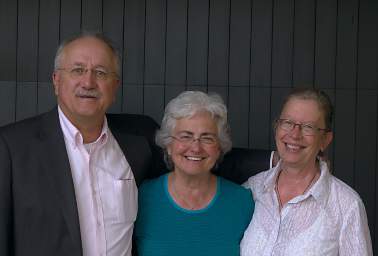
When Dona's mom was living at The Springs retirement home in Missoula she had a friend across the hall who had a daughter who lived in New Zealand. Dona and Wendy Blackman had gotten acquainted when Wendy visited to see her mother. They lived in Rotorua, and Wendy had told us to look them up if we came to visit. So here we were, kind of late in the day, but we called ahead and they said sure, come on by...
We ended up staying three days, probably overstaying our welcome a bit. Wendy and her husband Ian gave us lots of hints of things to see and do, and Ian fixed us some scrumptious yummy lamb and potatoes and veggies. It was mouthwatering good! Thank you Ian, for the food and the cooking lessons; we use them often!
Ian's rack of lamb recipe goes something like this: Put lamb on broiler pan with chopped potatoes, onions and whatever other veggies you desire. Rub lamb with olive oil and Moroccan seasoning (tumeric, coriander, rosemary, etc...) Pepper (on rack or w/ potatoes) Cook 200°C for 20 minutes; remove meat, leave potatoes another 10 min. Yum!
 |
| Wendy and Ian Blackman and Dona |
One of the mandatory things to do in Rotorua is to visit Tamaki Māori Village, home of Te Puia, home of the Māori Arts and Crafts Institute. It is situated in the Whakarewarewa geothermal area. In addition to the arts and crafts institute and numerous geysers and hot springs there is a reconstructed Māori village and native dance demonstrations.
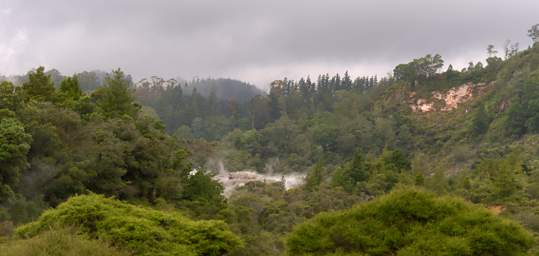 |
| Whakarewarewa Hot Spring |
 |
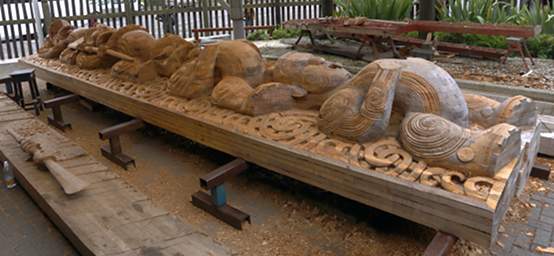 |
| Carvings at the Arts and Crafts Institute | |
The have a small museum with excellent examples of Māori fish traps, clothing and other items. I had noticed during our travels that many of the Māori names had repeated syllables at the end, such as Whakarewarewa. I figured the woman in the arts and crafts institute would know about that, so I asked her. Unfortunately, she didn't seem to be even aware of the fact until I pointed it out to her. So I still don't know why that is, and whether or not it has any significance.
 |
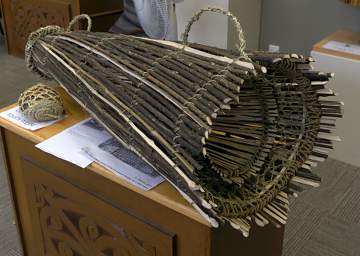 |
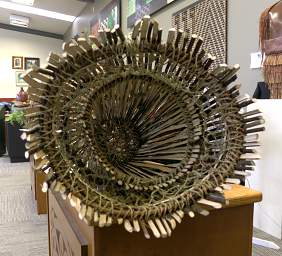 |
| Trap | Fish Trap | |
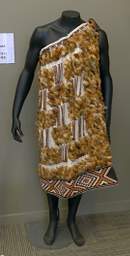 |
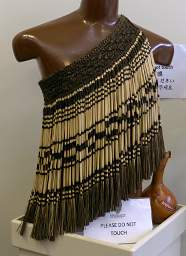 |
| Clothes | |
 |
 |
| Māori Village buildings | |
 |
 |
 |
| Mudpots |
The village had a cool example of a Māori beehive, and a snare for birds. The bird in the diagram is a Kereru, the New Zealand Wood Pigeon. Since the much larger Moa is now extinct, Kereru are vital to maintaining the native forests; they are one of only two species capable of swallowing the large fruit of many trees and dispersing the seeds.
 |
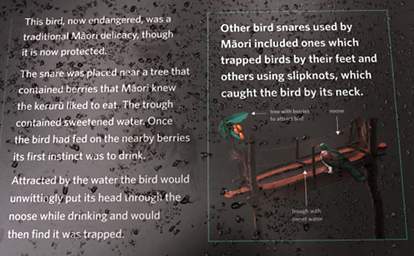 |
| Beehive | Snare Description |
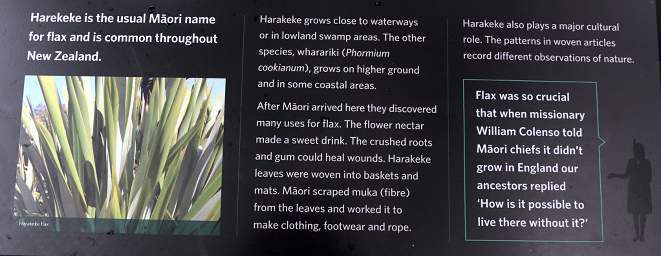 |
| Flax |
 |
| Manuka |
 |
| Pohutukawa Tree |
 |
| Mudpot |
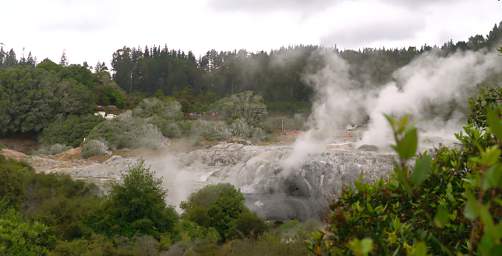 |
| Hot Springs |
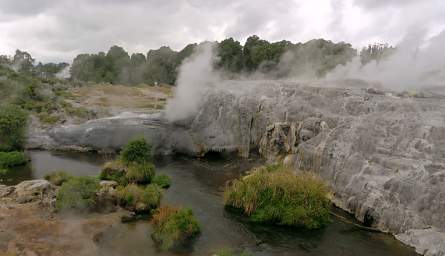 |
 |
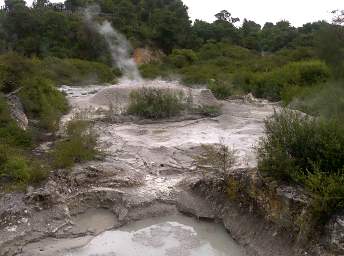 |
 |
| Mud Pots | |
The exhibit also has a resident Kiwi, housed in a special building which is particularly dark inside. Kiwis are nocturnal, and it's pretty difficult to see them in the wild. We hadn't seen a real one yet so we were happy to get a peak at this one. Unfortunately, it was too dark to take a picture.
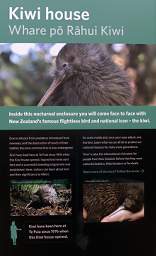 |
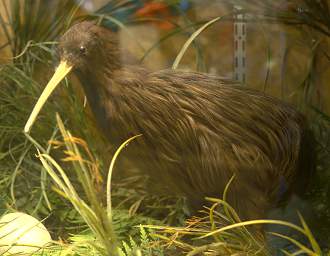 |
| Kiwi | Stuffed Kiwi |
 |
| Dance House |
Somewhere we read about a "canopy walk" in some giant redwoods near Rotorua. Ian and Wendy had heard about it and pointed us that direction; it was pretty cool. The Tree Walk is right on the outskirts of town.
We spent an afternoon at the New Zealand Raptor Rehab center, where we got to see New Zealand Falcons and other native birds of prey. They have a great rehab and reintroduction program and not enough funds, so if you're looking for a good place to put some money where it will do good things, think about them.
 |
| New Zealand Falcon (Karearea) (Falco Novaeceelandiae) |
We even got to hold one up close, which was pretty cool.
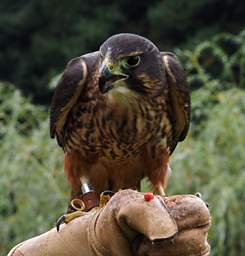 |
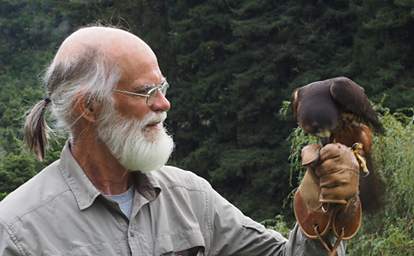 |
| |
Gary with a New Zealand Falcon
|
 |
 |
| Some people weren't particularly at home with the idea...
|
but it got better
|
 |
 |
| Dona thought it was cool;
|
The bird seemed to think it was ok too.
|
 |
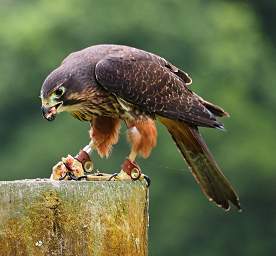 |
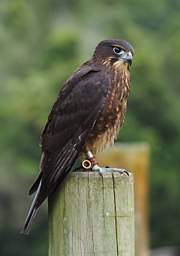 |
| New Zealand Falcon (Falco Novaeceelandiae) | ||
When the bird pounced on the bait on the ground it would do what the handler called mantling; it doesn't seem like a good idea to bother them when they're like that. Some sort of attitude issue...
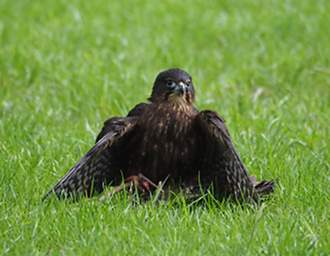 |
 |
| Mantling | |
I tried to get some shots of one flying, but I still don't have it down. I had the wrong kind of image-stabilization set; given the high shutter speed I probably should have left it turned off.
 |
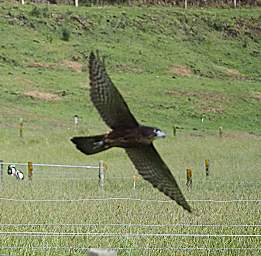 |
| New Zealand Falcon (Falco Novaeceelandiae)
|
New Zealand Falcon (Falco Novaeceelandiae)
|
We also got to see a Morepork, New Zealand's only (surviving) native owl. We had heard them in various campgrounds, but could never find one.
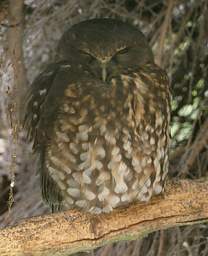 |
| Morepork (Ninox Novaeceelandiae)
|
There was also an Australian Harrier which was being rehabbed or was permanently injured and therefore could not be released back to the wild. It is the one bird of prey we saw a fair number of on our travels, but every time we stopped to take a picture they would fly off.
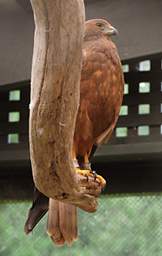 |
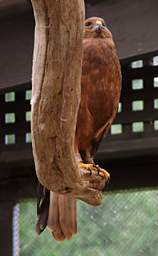 |
| Australian Harrier (Circus Approximans Gouldi)
|
|
When we left Rotorua heading north, we stopped at the Kaituna River. The upper portion of the river is sometimes referred to as the Okere River, and has numerous waterfalls including Okere Falls, a 7m high falls claiming to be the highest commercially rafted waterfall in the world.
We hiked along the river, hoping to see a few boaters descending; I wanted to see someone run the big falls. Unfortunately, no luck, although we did see several kayakers run some smaller stuff.
After doing some asking around I figured out that one could rent a kayak or go in a tandem kayak through Kaituna Kayaks. We eventually found Brad, the owner, at his house / garage shop. I had watched him earlier with a client in a tandem kayak when we were at the "Trout Pool" which is the takeout for floats down the whitewater section of the river. I was interested in renting a kayak and paddling the waterfall, if that was possible; I've never paddled a large waterfall, or even a medium sized one, and thought this might be a good opportunity to do so safely. Unfortunately, when I asked him he said they were running all the other parts of the river but did not take clients in kayaks over the waterfall; apparently only the rafts do that. Pooey!
 |
| Okere Falls Sign |
There is an old powerhouse and dam structure at the start of the whitewater, and I kept looking at it thinking there was no way the hydro falls itself was normally run. The only thing I could see that looked runnable was a slot on the far side. When I talked to Brad at Kaituna Kayaks he said that was the case, that they snuck down on the far side.
 |
 |
| Kaituna River below Old Power Plant | |
 |
 |
| I think this is the 7m one |
There are some caves down at the water's edge in the Kaituna River canyon. They were used as a refuge by the Māori during conflicts with European settlers.
 |
| Caves Sign |
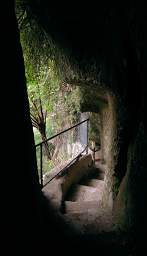 |
 |
 |
| Kaituna River Caves | ||
 |
 |
| Kayaking, Brad Lauder and Client | |
 |
 |
From the Kaituna River we headed north. We had been looking for another short bike ride to do, and Dona found one that seemed perfect. The Hauraki Rail Trail is normally a several day trip. After reading up on it, we decided we didn't want to do the whole thing because much of it was on a regular road and the last part didn't seem all that interesting. But the first part looked pretty neat and we figured it would make a great one day ride. We headed for the town of Waihi, near the Bay of Plenty, on the Ohinemuri River. We found accomodations at the Waihi Motor Camp on a hill above the town. It has a nice little stream running through it, was quiet, and suited us just fine. We ate and crashed.
 |
| Waihi Camp |